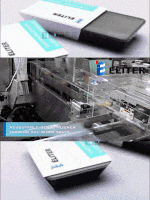Methodologies for the control of color in food
2022-12-23
Do you know the new software to measure the color of food?
What features does a portable spectrophotometer possess?

When color is correlated with food laboratory and quality control data, it can become an integral component of clinical data of factors ranging from product attractiveness to shelf life of possible spoilage and/or contamination risks.
Software for color formulation and color matching in packaging is available for portable and tabletop spectrophotometers for use in color laboratory control systems. The quality control software with pass/fail evaluation and database update functions is an important component of these systems, and it is also a quality control inspection function included in our Konica Minolta portable colorimeters and spectrophotometers.
The art in the science of color integration as for example in a quality component of a food, lies in the methodology developed and used by food producers and food processors. In food science, technologies are developed in response to the needs defined by scientists and technologists of the food industry. At Konica Minolta Sensing, we see our craft as technologically responsive, that is, scientists from the food industries and technologists provide for their color measurement and methodology goals, and in return, we try to create and apply technologies to meet their needs. Over the past 20 years, we have gone through almost four generations of technologies. The following examples show the picture of the continuous progress in food color measurement, as well as suggestions on where we will go in the 21st century.
Baking “Delicacies” At Pepperidge Farm ®
Judging baked goods by eye is not as easy as many home bakers might think, according to Mike Davis, a Bakery Technologist, at Pepperidge Farm. Until Pepperidge Farm installed the BC-10 baking contrast meters, Mr. Davis said judging an acceptable color of bakery baked goods in the production factories was a real challenge. Previously, an “acceptable color” was established by comparing a sample of the production against a color photograph of how the product should look when it comes out of the oven. Despite the photos taken in a special room with carefully controlled lighting conditions, Mr Davis said judging the colour on the line was problematic.
The opinion of the visual color was simply very subjective. At Pepperidge Farm it was recognized that color and appearance is so important to consumer preference and the flavor profile of baked and fried products that objective standards and measurement techniques had become essential. The Konica Minolta BC-10 portable, handheld and battery-powered meter is a colorimeter that has eliminated the problem of subjectivity, by allowing acceptable levels of color contrast (the brilliance of a baked or fried product) to be established and communicated numerically to production plants. Pepperidge Farm’s standard color measurements and tolerance are now expressed in terms of baking contrast units (BCU). The baking contrast unit is calibrated so that the difference of 1/10 BCU corresponds to a difference noticeable by a normal observer. The BC-10 meter also reports in the commonly used CIE L*a*b* color space and scale units, measuring the luminosity/darkness in units from the darkest, 0, to the brightest, 100.
“preserving” The Right Color At Welch’s
A few years ago, Welch Foods, Inc., the famous cooperative of about 1400 grape growers, was looking for a more empirical way in the formulation of color in the recipes of its many bottled and canned juices, jellies, jams and frozen products. The challenge, explained his laboratory, was the seasonal and annual regional variability that the natural grapes used, the Concord grapes and the Niagra grapes. Grown in five states and one Canadian province, and processed in six plants, grapes can vary in a number of factors. The color, of course, is important, since many Welch products are packed in clear glass and plastic bottles.
The analysis of samples of the harvest of each season with nutritional standards and recipes, a continuous process in the laboratory, was very accurate, qualitative and quantitative, except for the color. That was still somewhat subjective. Working with Konica Minolta application engineers, Welch food technologists determined that the optimal color measurement and evaluation methodology for them was by spectrophotometry.
Experimenting with portable and tabletop spectrophotometers, the lab found that it could work backwards from the ideal final product and set the color specifications and tolerances at every stage of the product manufacturing process. The variations of the color standard could then be adjusted to ensure a better color consistency in the finished products. Welch also discovered that spectrophotometry was highly useful in the development of new products.




